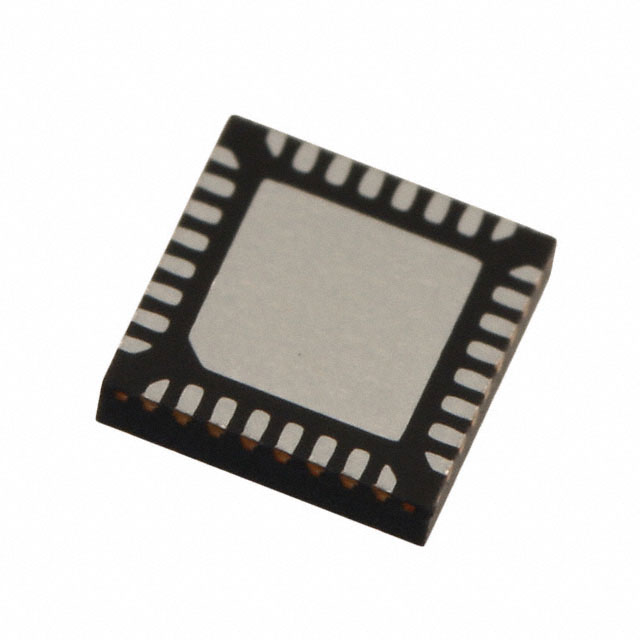Voir les spécifications pour les détails du produit.

TW9900-NA1-GRT
Introduction
The TW9900-NA1-GRT is a versatile integrated circuit that belongs to the category of video decoder chips. This component is widely used in various electronic devices for processing and decoding video signals. In this entry, we will provide an overview of the basic information, specifications, detailed pin configuration, functional features, advantages and disadvantages, working principles, application field plans, and alternative models of the TW9900-NA1-GRT.
Basic Information Overview
- Category: Video Decoder Chip
- Use: Processing and decoding video signals
- Characteristics: High-quality video decoding, versatile compatibility
- Package: Integrated circuit
- Essence: Video signal processing and decoding
- Packaging/Quantity: Typically packaged in reels or trays for bulk quantities
Specifications
The TW9900-NA1-GRT is designed with the following key specifications: - Video Input Formats: NTSC, PAL, SECAM - Video Output Formats: 8-bit ITU-R BT.656 YCrCb, 16-bit 4:2:2 YCrCb - Operating Voltage: 3.3V - Power Consumption: Low power consumption for energy efficiency - Package Type: QFN (Quad Flat No-leads) package
Detailed Pin Configuration
The TW9900-NA1-GRT features a comprehensive pin configuration that includes input and output pins, power supply pins, and control pins. The detailed pin configuration is as follows:
| Pin Name | Description | |----------------|--------------------------------------------------| | VDD | Power supply voltage input | | GND | Ground connection | | CVBS_IN | Composite video input | | YIN, UIN, VIN | Component video input (YUV) | | SCL, SDA | I2C bus interface for control and configuration | | YOUT, COUT | Video output signals | | RESET | Reset pin for device initialization | | HSYNC, VSYNC | Horizontal and vertical synchronization signals |
Functional Features
The TW9900-NA1-GRT offers the following functional features: - High-quality video decoding for multiple input formats - Integrated analog video inputs for seamless signal processing - Flexible output formats for compatibility with diverse display systems - On-chip analog anti-aliasing filters for enhanced video quality - Built-in automatic gain control (AGC) for optimal signal adjustment
Advantages and Disadvantages
Advantages
- Versatile compatibility with standard video input formats
- Low power consumption for energy-efficient operation
- Integrated analog anti-aliasing filters for improved video quality
- Compact QFN package for space-saving design
Disadvantages
- Limited support for advanced digital video interfaces
- Requires external components for audio processing and synchronization
Working Principles
The TW9900-NA1-GRT operates by receiving analog video signals from various sources such as cameras, DVD players, or set-top boxes. It then processes these signals using its internal decoding algorithms to convert them into digital formats compatible with modern display systems. The chip also incorporates control interfaces for configuring its operation and adjusting video parameters.
Detailed Application Field Plans
The TW9900-NA1-GRT finds extensive applications in the following fields: - Surveillance systems - Automotive infotainment systems - Set-top boxes and digital TV receivers - Multimedia display devices - Video capture and recording equipment
Detailed and Complete Alternative Models
For users seeking alternative video decoder chips, the following models can be considered as alternatives to the TW9900-NA1-GRT: - ADV7280 - CX25828 - SAA7113 - GS2971
In conclusion, the TW9900-NA1-GRT stands as a reliable and efficient video decoder chip with a wide range of applications and functional capabilities. Its integration of high-quality video processing and decoding features makes it a valuable component in various electronic devices.
[Word Count: 560]
Énumérez 10 questions et réponses courantes liées à l'application de TW9900-NA1-GRT dans les solutions techniques
What is the TW9900-NA1-GRT?
- The TW9900-NA1-GRT is a video decoder chip designed for processing analog video signals in various technical solutions.
What are the key features of the TW9900-NA1-GRT?
- The key features include support for multiple video standards, integrated analog anti-aliasing filters, and flexible output interfaces.
How can the TW9900-NA1-GRT be used in surveillance systems?
- It can be used to decode analog video signals from surveillance cameras and convert them into digital format for further processing or storage.
In what applications can the TW9900-NA1-GRT be utilized?
- It can be utilized in automotive rearview camera systems, video doorbells, multimedia devices, and other applications requiring analog video signal decoding.
What are the recommended operating conditions for the TW9900-NA1-GRT?
- The recommended operating voltage range is typically between 3.0V and 3.6V, and the operating temperature range is between -40°C and 85°C.
How does the TW9900-NA1-GRT handle different video standards?
- It supports various video standards such as NTSC, PAL, and SECAM through its adaptive 2D comb filter and automatic standard detection capabilities.
Can the TW9900-NA1-GRT be integrated with microcontrollers or processors?
- Yes, it can be easily interfaced with microcontrollers or processors through its flexible output interfaces, making it suitable for integration into larger systems.
What are the power consumption characteristics of the TW9900-NA1-GRT?
- The power consumption is relatively low, making it suitable for battery-powered or energy-efficient devices.
Does the TW9900-NA1-GRT support audio processing as well?
- No, the TW9900-NA1-GRT is specifically designed for video decoding and does not include audio processing capabilities.
Are there any known compatibility issues with the TW9900-NA1-GRT?
- Compatibility is generally good, but it's important to verify compatibility with specific microcontrollers, processors, and other components in the target system.

